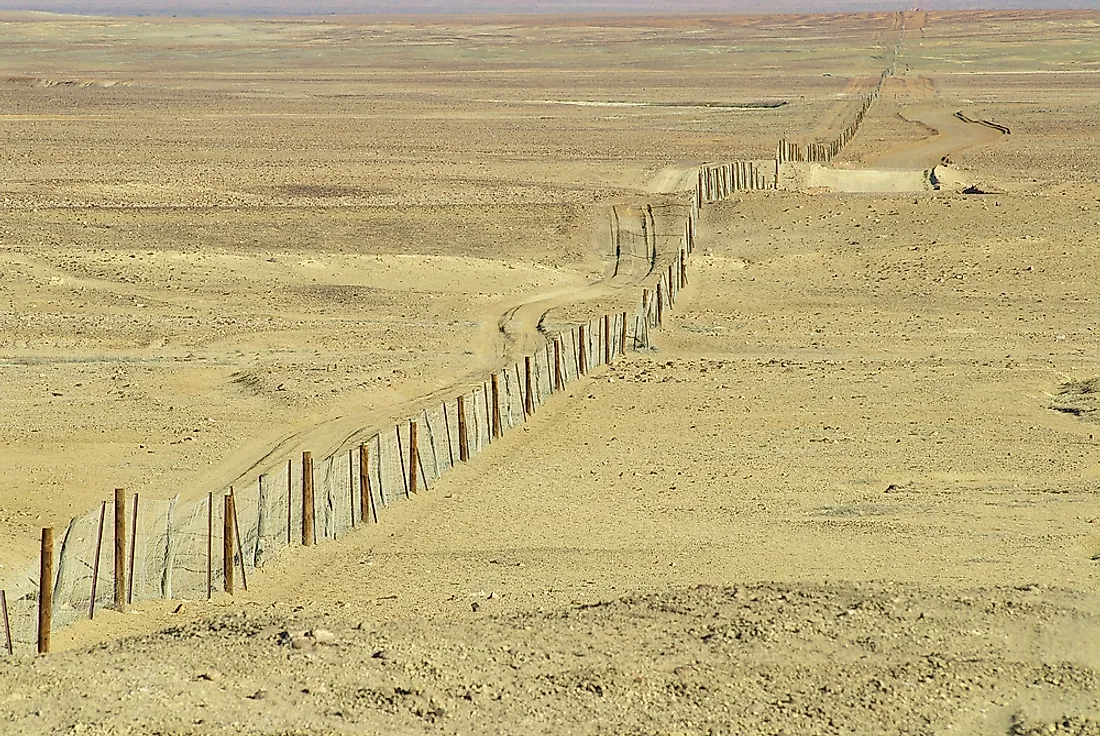What Makes The Dingo Fence One Of The World's Longest Structures?

The Dingo Fence is a pest-controlling structure which was constructed in Australia during the 1880s. The fence was built to help keep the dingoes out of the southeastern parts of the continent while protecting the flocks of sheep in southern Queensland. The Dingo Fence is one of the most extended barriers on earth which is about 3,488 miles long. The pest-exclusion barrier starts at Jimbour near Dalby and stretches for some few thousand miles through an arid area to the Eyre Peninsula. The fence was not entirely successful since there are some few dingoes on the southern side of the continent, but it did manage to reduce the loss of sheep to predation.
History of the Dingo Fence
The increasing number of rabbits during the 1860s and 1870s forced the settlers to build a rabbit-proof barrier in 1884 to protect their crops. However, the fence failed in keeping the rabbits away and only managed to keep the marsupials out. The ever-increasing number of sheep farms introduced the need for a dingo barrier, and this prompted the government to extend the rabbit-proof fence while increasing its height. The construction of the Dingo Fence was not completed by 1948, and since it was costly to maintain the structure, many people pushed for complete extinction of the wild-dog and dingo cross-breeds. The use of the sodium monofluoroacetate bait seemed like a cheaper alternative to the fence extension and maintenance.
Physical Design of the Fence
The barrier varies in construction with a big part of it built using a 5.9 ft tall wire mesh while some areas in South Australia have multi-strand electric fence. A 3.4 inch-long cathode fluorescence lamp lights other parts of this structure at night. The lamps are powered by some long-life batteries which are charged during the day by photovoltaic cells. There are a series of gates at farm and minor crossings which allow vehicles to go through the fence. The government installed cattle grids in places where it intersects with highways and major roads to allow cars to pass through.
The 3,488 mile-long fence stretches from the Eyre Peninsula right on top of the Great-Australian Bight to Jimbour in Darling Downs. The 1,553 mile-long part of the barrier which extends through Queensland is known as the Wild Dog Barrier fence or Great Barrier Fence. The Great Barrier Fence has a two-person patrol team that patrols the 186 mile section of the barrier after every two weeks.
The Queensland boundary fence extends for 245 miles westwards along its boundary with New South Wales to Strzelecki desert. It passes through Cameron corner (a point where three states of South Australia, New South Wales, and Queensland meet) where it merges with the South Australian boundary fence. It then stretches southwardly for about 160 miles along the South Australia-South New Wales border until it combines with the 1,383 mile Dog Fence which is in South Australia.
Environmental Impacts of the Dingo Fence
There are fewer kangaroos on the northwest part of the fence where the dingoes reside which suggests that the presence of dingoes has resulted in the reduction of the kangaroo’s population. A large kangaroo population is present inside the fence, which is caused by the lack of dingo’s predation. The exclusion of the dingoes has increased pasture competition between the emus, kangaroos, rabbits, and sheep.











